Procol • April 15, 2025
Procurement Digitalization: What is it and Why it is important?
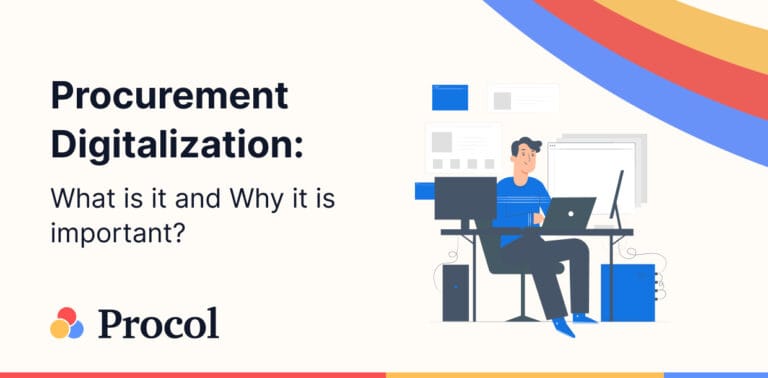
The digital revolution impacts industries across the board, and procurement is no exception. Digitalization of procurement has become a game-changer, causing a revolution in how businesses manage their supply chains and interact with suppliers. This shift to procurement digitization solutions isn’t just a trend; it’s becoming crucial for companies that aim to remain competitive in today’s quick-paced business environment.
Companies adopting digitalization procurement discover new ways to streamline processes, cut costs, and increase productivity. Digitalization in procurement trends reshapes the entire procurement lifecycle, from automated buying systems to cutting-edge analytics tools.
What is the meaning of Digital Procurement?
Digital procurement uses technology to boost and automate procurement processes. It moves from traditional methods to a centralized platform that simplifies operations and automates tasks. This method uses apps and systems to handle all procurement-related data. Digitalization in procurement replaces manual data entry and paperwork for integrated software, leading to perks like cost cuts and stronger supplier relationships. In the public sector, procurement digitalization uses e-buying systems and online portals to enhance efficiency and transparency. It ensures demand is met without delays or overspending, maintains compliance, and improves community services.
Key Benefits of Digital Procurement
Businesses adopt digitalization procurement for various reasons, including the need for greater efficiency and more structured processes. Other motives include reducing errors, minimizing manual work, and improving visibility across procurement workflows.
Digitalization procurement offers several key benefits to both procurement teams and the business:
Enabling process standardization:
Lack of standardized processes is a common problem in procurement. This occurs when different teams use unique process variations or resist changes to established methods. The failure to standardize processes makes management and oversight more difficult, potentially compromising consistency and security.
Digitalization procurement solves this by allowing teams to build structured processes using intuitive interfaces or customizable templates. No-code options are popular as they don’t require new code for each change, benefiting procurement and IT teams.
Accelerating integrated procurement:
Integrated procurement connects processes and workflows, resisting data silos and collaboration barriers. It links procurement to existing tech stacks and relevant software tools. Digitalization in procurement helps achieve this by eliminating manual work, connecting subprocesses, and expanding automation capabilities.
Containing costs:
Digitalization procurement controls costs by eliminating inefficiencies, preventing errors, and reducing manual work. It delivers more efficient processes through system integration and automation, dissolving data silos and reducing time-consuming manual tasks.
Enhancing visibility and control:
Procurement requires oversight of many moving parts and stakeholder input. Digitalization of procurement improves visibility and control over requisitions, purchase orders, approvals, and supplier management tasks in five key ways:
- Creating comprehensive procurement records.
- Automatically updating connected databases.
- Enforcing rules to prevent incomplete information.
- Granting secure access to stakeholders.
- Offering customizable views and reports for tracking statuses, measuring KPIs, and identifying issues.
What are the 5 steps to Digitalization Procurement?
Digitalization procurement can be split into several phases, covering each stage of the procurement cycle. It’s worth noting that this process may vary between companies. However, here’s a general breakdown of how digitalization procurement typically operates:
Need Identification and Demand Planning:
This initial step involves your company pinpointing its requirements. This process spans various users and departments within your organization. During this phase, staff can search through pre-approved internal or external supplier and item catalogs. Your system automatically checks for a sufficient budget for the requested item.
Vendor Selection and Relationship Building:
This stage focuses on supplier interaction. Ideally, your procurement digitization system automatically sends purchase quote requests to pre-screened suppliers. Your suppliers can then submit offers or even participate in online negotiations. A key advantage of using an automated system for sourcing and choosing suppliers is its ability to foster supplier relationships and enhance collaboration.
Ordering and Contract Management:
E-procurement platforms automatically generate purchase orders for approval. Contracts are also drafted and managed digitally, streamlining the procurement process and enhancing record-keeping. Your system provides real-time updates and valuable information on order status, delivery schedules, and invoices.
Delivery and Invoice Processing:
At this stage, during delivery, your procurement digitalization tool receives confirmation through automatic integration with your logistics system. Invoices are received electronically, matched with purchase orders, and automatically approved or flagged if discrepancies arise.
Data Analysis and Reporting:
Through digitalization procurement software, your procurement team and leaders access real-time insights on spending patterns, category trends, cash flow, and supplier performance via reports and dashboards. These centralized reports facilitate improved procurement efficiency within your company.
Types of Procurement Strategies
Companies use different buying methods to improve their supply chains and reach specific business goals. These methods tackle various parts of the buying process, from cutting costs to being more eco-friendly. Here’s a list of some typical buying strategies:
1. Cost Reduction:
This strategy aims to cut procurement costs. It does this by getting better prices, buying in bulk, and finding ways to save money. The goal is to boost the company’s profits by spending less on procurement overall.
2. Risk Management:
This approach tries to spot and lessen potential supply chain risks. It includes checking suppliers’ reliability, using a mix of suppliers, and having backup plans to keep the business running.
3. Supplier Management and Optimization:
This strategy emphasizes creating strong bonds with suppliers and improving the supplier network. It involves checking suppliers’ performance, working together more, and improving communication to improve the whole supply chain.
4. Green Purchasing:
People also call this as sustainable procurement. This strategy puts eco-friendly products and services first. It tries to lower the company’s effect on the environment and boost its social responsibility.
5. Global Sourcing:
This method buys goods and services from markets worldwide. It aims to save money, get new technology, or find unique resources that are not available.
6. Total Quality Management:
This strategy ensures that the goods and services bought are high-quality throughout the supply chain. It implements quality control steps, continuously improves processes, and runs programs to ensure suppliers deliver quality.
How can Procurement Technology Speed Up Procurement Transformation?
Increased Transformation Speed:
Procurement tools speed up transformation by automating processes aligned with your goals. For example, to improve the purchasing experience, a tool can guide users to preferred suppliers, reducing manual effort and queries.
This approach is more scalable than manual processes, which require more staff as queries increase. Technology lets your team focus on value-added activities like cost negotiation and catalog improvement.
Consistent Output:
Procurement digitalization provides consistent results for any process. For instance, controlling maverick spending typically involves guiding users to preferred suppliers. Due to resource limitations, manual analysis of spending behavior needs to be more consistent and repeatable. A standard purchase order system can automate this process, analyzing trends and guiding users consistently and repeatedly.
Overall Lower Cost:
Procurement digitalization tools offer consistent, automated processes at a lower cost. Modern procurement systems are now easier to use and more unified. Cloud platforms enable advanced AI capabilities at a fraction of in-house development costs, lowering the procurement ecosystem’s overall costs.
Whether implementing a standard system or developing a custom solution, cloud-based options reduce infrastructure and IT overhead, resulting in cost savings.
What are the Challenges of Implementing Digital Procurement?
While digitalization procurement offers benefits, it also presents challenges:
- Change management: Employees may need to change from manual to digital processes and training is crucial for a smooth transition.
- Data quality and integration: Migrating data can be problematic. To ease the transition, integrate your platform with existing systems.
- Cost: Investing in software licenses, hardware updates, and maintenance is necessary.
- Cybersecurity: Robust security measures are essential to protect sensitive information.
- Measuring success: Quantifying ROI may be initially challenging. Consistent data analysis is key as you adapt to digital strategies.
How to Choose a Digital Procurement Tool for a Business?
Choosing a digitalization procurement tool requires careful planning. Follow these steps to select the right one for your business:
- Identify Your Needs: Determine current procurement issues and set clear goals. Identify essential features needed, like online buying tools and data analysis.
- Scout The Market: Research available tools and top providers. Compare features, read reviews, and check case studies. Consider usability, customization, and scalability. Evaluate costs, including fees and setup expenses. Estimate potential savings and improvements. Negotiate prices and payment terms. Look for reliable support and training.
- Don’t Forget To Test: Before full implementation, test the tool on a smaller scale. Gather user feedback and use insights to refine the tool.
How does Digital Procurement Result in Procurement Transformation?
Digitalization procurement drives significant changes in supply chain management and supplier interactions. It streamlines processes, boosts efficiency, and creates strategic value through advanced technologies.
Key benefits include:
- Increased speed: Automating manual tasks allows teams to focus on value-added activities.
- Consistent processes: Digital systems ensure uniformity in operations, such as controlling maverick spending.
- Lower costs: Cloud-based solutions make advanced AI capabilities more affordable.
- Transformed roles: As analytics tools produce faster reports, staff can focus on implementing automation and leveraging insights.
The impact of digitalization procurement on transformation is evident in several key areas:
- Enhanced customer experience
- Simplified purchasing processes
- Improved spend visibility
- Automated manual tasks
- Increased supplier accountability
- Strategic decision-making based on data-driven insights
Building Blocks of a Procurement Digitalization Strategy
The right tool can help procurement teams move past manual processes, but procurement digitalization is more than just software. Successful procurement combines the right people, processes, and technology. Here are six essential building blocks of an effective procurement digitization strategy:
1. Unified tech stack: Fragmented tech stacks cause many procurement problems, leading to manual data entry, silos, and process gaps. Unifying the stack helps information flow and improves existing apps through “stack extensibility.”
2. Standardized processes: Standardizing processes means following the same steps for each workflow. This leads to more consistent outcomes by reducing delays, errors, and risks.
3. Collaborative relationships: Procurement processes involve various internal and external stakeholders. Building strong partnerships is crucial for an effective strategy.
4. Feedback loops: Centralized feedback channels help teams identify improvement opportunities and spot issues like high error rates.
5. No- or low-code automation: No-code automation combines automation with a visual interface, allowing teams to adapt quickly to supply chain changes. This approach keeps IT in control while giving procurement teams more flexibility.
6. Talented people: While advanced systems are valuable, there’s no substitute for skilled professionals in building relationships and making complex decisions.
What are Some of the Best Digital Procurement Tools?
Check out the top digital procurement tools below:
Procol:
The best procurement tool for a team depends on needed capabilities, integrations, and budget. The key features include a user-friendly interface, a mobile app for on-the-go task management, tailored templates for efficiency, and seamless ERP system integration. Procol is best for cost savings, efficiency, and compliance.
Pipefy:
Due to its ease of use and adaptability, Pipefy is a no-code tool used across industries. It manages various processes, such as P2P, accounts payable, sourcing, and more. Pipefy offers out-of-the-box accessibility with customization options.
Fraxion:
Fraxion automates procurement workflows, offers data collection and business intelligence, integrates with ERP systems, and is cloud-based, making it suitable for remote work.
Tradogram:
Tradogram provides customization, analytics, and vendor performance measurement. It manages processes like purchase-to-pay, strategic sourcing, and spend analysis.
Procurify:
Procurify is an all-in-one spend management platform. It tracks spending, organizes documents, and manages various procurement activities. Features include customizable approvals, purchasing workflows, and spending cards.
SAP Ariba:
Ariba is an end-to-end system suitable for enterprise-scale businesses. It manages functions like supplier management, strategic procurement, and direct spending. Features include source-to-pay management, unified supplier records, and compliance tools.
How Digital Transformation Trends Affect Procurement?
AI and ML impact task automation and improve decision-making in procurement. These technologies also influence data analysis, trend prediction, and supplier selection optimization.
- Cloud-based solutions impact scalability and real-time teamwork, streamline processes, and enable remote work.
- Blockchain influences supply chain transparency and fraud reduction.
- IoT impacts real-time goods and inventory tracking to improve demand forecasting.
- Data analytics and predictive modeling help to identify cost-saving possibilities and drive data-based decisions.
- Digital marketplaces and e-procurement platforms connect buyers and sellers, cutting down intermediaries and boosting competition.
Conclusion
The digital revolution in procurement is causing a significant shift in how companies manage their supply chains. From AI-powered analytics to cloud-based platforms, new technologies are shaking up traditional procurement methods. These procurement digitalization tools are helping businesses cut costs, boost efficiency, and make smarter decisions. What’s more, they’re changing the role of procurement teams, freeing them up to focus on strategy rather than just number-crunching.
To succeed, businesses must think carefully about their digital strategy and choose the right tools to meet their needs. The goal is to create a more agile, efficient, and value-driven procurement function.
Explore more from Procol
Discover expert tips, how-to guides, industry insights, and the latest procurement trends.
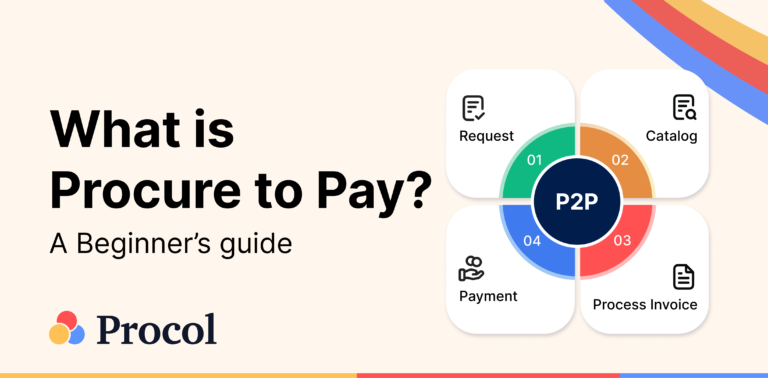
What is Procure-to-pay (P2P)? An Ultimate Guide
Procure to pay is the process from procurement of materials needed...
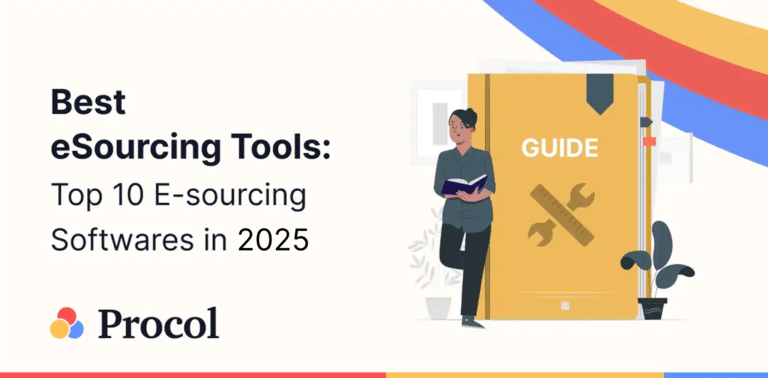
Best eSourcing Tools: Top 10 eSourcing Software in 2025
Discover top 10 e-sourcing tools and esourcing platforms necessary for efficient...
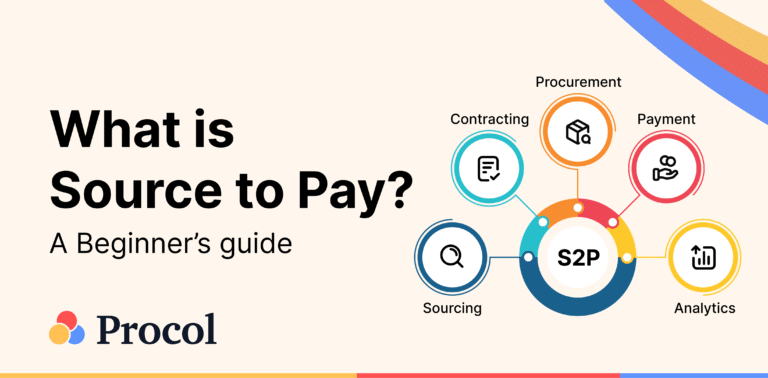
What is Source-to-pay in 2025? An Ultimate Guide
Source to pay is the process of sourcing vendors to procure...

